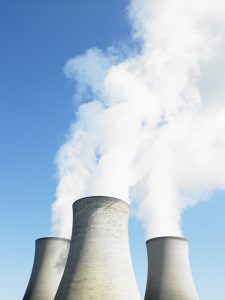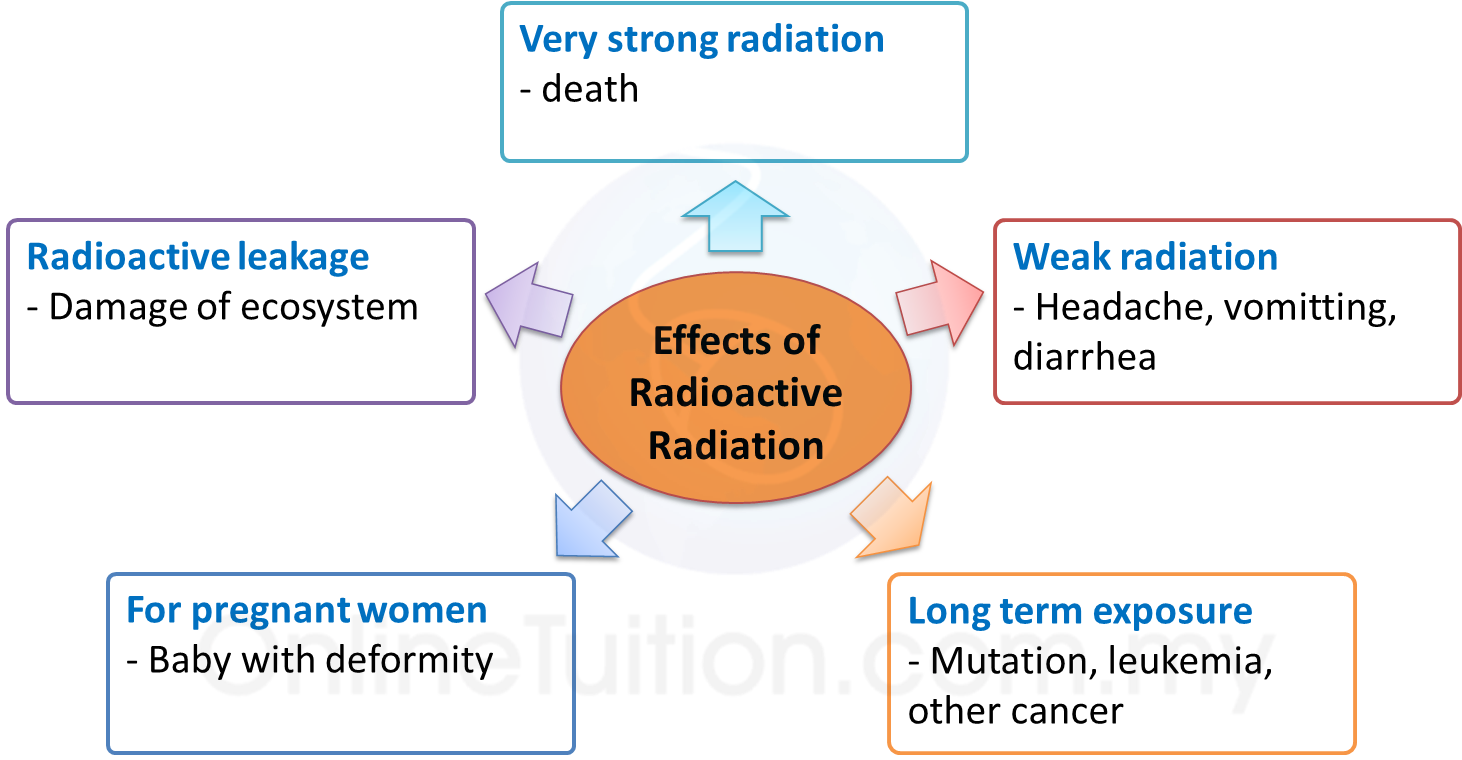6.2.3 Uses of Nuclear Fusion
1. Nuclear energy is used to
(a) Generate electrical energy
(b) Operate satellites
(c) Propel cruises, aircraft carriers and submarines

Nuclear power station
6.2.4 Process of Generating Electricity from Nuclear Energy
1. In a nuclear power station, nuclear energy is produced in a nuclear reactor to generate electricity.
2. Figure below shows the main components in a nuclear power station.

Nuclear power station
a. Graphite moderator
Fast moving neutrons are slowed down by collisions with nuclei in the moderator so that they can cause further fission. In some nuclear power plant, the moderator is water.
b. Uranium rod (Fuel)
Produces nuclear energy from chain reactions of nuclear fission.
c. Control rod
Control the rate of chain reaction.
d. Coolant
To take away the heat from the nuclear reactor.
e. Thick concrete wall
To prevent the escape of harmful radiations.
f. Steam generator
Water in the generator is heated and changed into steam. The steam then drives the turbines.
g. Turbine
To turn the dynamo in the electrical generator to produce electricity.
3. Figure below shows the summary of the process taking place and transformation of energy in a nuclear power station.

Energy transformation during generation of electricity




